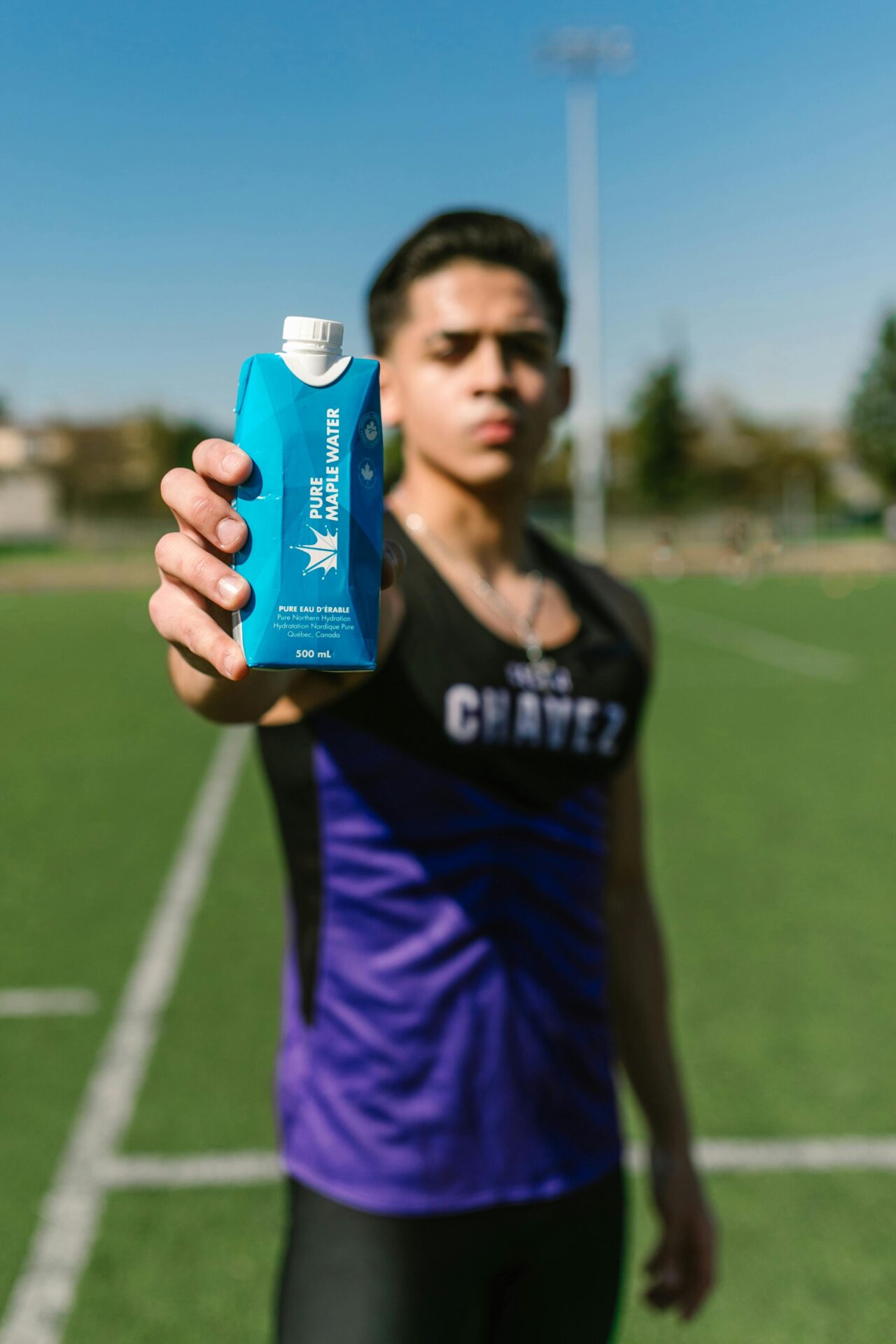18 Jun

Sampling products has become a powerful marketing tool for businesses across various industries. From food and beverage companies to beauty brands, product sampling offers a unique opportunity to connect with consumers on a personal level and showcase the value of your offerings.
In this blog post, we will explore what product sampling is, delve into its benefits for businesses, discuss different types of sampling campaigns, offer tips on planning and executing successful campaigns, provide real-life examples of effective product sampling strategies, and share creative ideas to inspire your own sampling initiatives.
Whether you’re looking to boost brand awareness or drive sales, these proven tips and ideas will help you make the most out of your next product sampling campaign! So let’s dive in and discover the power of product sampling together!
What is Product Sampling?
Product sampling is a marketing strategy that involves offering free samples of a product to potential customers. It allows consumers to try out the product before making a purchase, giving them firsthand experience and building trust in the brand.
The concept of product sampling is simple: by providing people with an opportunity to test your products, you’re increasing their familiarity and likelihood of purchasing in the future. It’s like giving them a sneak peek into what your brand has to offer without any commitment on their part.
One key advantage of product sampling is its ability to create positive word-of-mouth buzz. When consumers receive something for free and have a good experience with it, they are more likely to tell their friends and family about it. This can lead to increased brand awareness and potentially attract new customers who may not have heard about your products otherwise.
Moreover, product sampling allows businesses to gather valuable feedback from customers. By offering samples, you can gain insights into how people perceive your products, identify areas for improvement or innovation, and make data-driven decisions that will enhance customer satisfaction.
In addition, product sampling can help differentiate your brand from competitors. In today’s crowded marketplace where consumers are bombarded with countless options, being able to physically try out a product sets you apart from other brands that rely solely on advertising or online reviews.
Product sampling offers businesses an effective way not only to introduce their offerings but also build trust among consumers through firsthand experiences. Whether used as part of a larger marketing campaign or as standalone initiatives at events or retail locations, well-executed product samplings have proven time and again that they can drive sales, boost brand loyalty, and leave lasting impressions on potential customers.
Benefits of Product Sampling for Businesses
Product sampling is a powerful marketing tool that offers numerous benefits for businesses. One of the key advantages is that it allows potential customers to experience your product firsthand, increasing their likelihood of making a purchase. By offering samples, you are essentially giving people a taste of what your product has to offer.
Additionally, product sampling helps build brand awareness and recognition. When people try out your sample and have a positive experience, they are more likely to remember your brand and recommend it to others. This word-of-mouth promotion can lead to increased sales and customer loyalty.
Moreover, product sampling provides valuable market research insights. By gathering feedback from consumers who have tried your samples, you can gain valuable insights into how well your product is received and make necessary improvements based on this feedback.
Furthermore, offering free samples can generate excitement around new products or launches. It creates buzz and anticipation among consumers who are eager to try something new before committing to purchasing it.
By providing samples at trade shows or events related to your industry, you can reach a targeted audience who are already interested in similar products or services. This increases the chances of converting them into loyal customers.
Product sampling offers several benefits for businesses including increased sales opportunities through firsthand experiences with the product, building brand awareness through positive word-of-mouth promotion, obtaining valuable market research insights from consumer feedback on samples provided as well as generating excitement around new launches or events attended by target customers
Types of Product Sampling
When it comes to product sampling, there are various methods that businesses can employ to get their products into the hands of potential customers. Let’s explore some of the most effective types of product sampling campaigns:
1. In-store Sampling: This traditional approach involves setting up a booth or stand in a retail store where consumers can try out the product firsthand. It allows for immediate feedback and creates a sense of excitement around the brand.
2. Direct Mail Samples: Sending samples directly to consumers’ homes is another popular method. By targeting specific demographics, businesses can ensure that their samples reach individuals who are more likely to convert into paying customers.
3. Online Sampling: With the rise of e-commerce, online sampling has become increasingly popular. Brands offer free samples as incentives for signing up for newsletters or making purchases on their websites.
4. Event Sampling: Utilizing events such as trade shows, festivals, or conferences provides an opportunity to showcase products and engage with a large audience in one place.
5. Subscription Box Samples: Collaborating with subscription box services allows brands to reach a targeted audience interested in trying new products within specific niches.
6. Influencer Collaboration: Leveraging influencers and bloggers, with the media barter agencies in India, who have established credibility and trust within their communities can amplify the reach of your product by providing authentic reviews and recommendations.
By incorporating different types of product sampling strategies into your marketing mix, you can increase brand awareness, generate word-of-mouth buzz, and ultimately drive sales conversions.
How to Plan and Execute a Successful Product Sampling Campaign
Planning and executing a successful product sampling campaign requires careful strategizing and attention to detail. Here are some key tips to ensure your campaign is a hit:
1. Define Your Objectives: Start by clearly defining your goals for the sampling campaign. Do you want to increase brand awareness, generate sales leads, or gather customer feedback? Having a clear objective will guide your entire strategy.
2. Know Your Target Audience: Research and understand your target audience demographics, preferences, and habits. This information will help you determine where and when to conduct the sampling activities for maximum impact.
3. Choose the Right Sampling Method: There are various ways to distribute samples – in-store demos, mailings, events, or digital platforms like social media campaigns. Select the method that aligns with your objectives and reaches your target audience effectively.
4. Plan Timing & Locations Carefully: Consider peak shopping periods or events related to your product category when deciding on timing for distribution. Also, select locations where there is high foot traffic relevant to your target market.
5. Create an Engaging Experience: Make sure the sample distribution process is memorable and engaging for consumers. Train staff members who will be involved in the campaign to deliver a positive brand experience while distributing samples.
6. Measure Success & Gather Feedback: Track key metrics such as sales uplift or website visits during/after the campaign period. Additionally, solicit feedback from customers who received samples via surveys or online reviews to gauge their response.
Executing a successful product sampling campaign requires careful planning, understanding of consumer behavior and preferences along with effective measurement techniques.
Real-Life Examples of Successful Product Sampling
1. Coca-Cola: The iconic beverage brand used product sampling to great effect during the 2014 FIFA World Cup. They distributed thousands of free Coke cans at different fan zones and stadiums, allowing consumers to experience the refreshing taste firsthand. This led to increased brand awareness and a boost in sales.
2. Sephora: The beauty retailer offers free samples of their cosmetics and skincare products with every purchase. By providing customers with these samples, they not only encourage trial but also create a sense of anticipation for new product launches. This strategy has helped Sephora build customer loyalty and drive repeat purchases.
3. Red Bull: Known for its high-energy drinks, Red Bull implemented a clever product sampling campaign by sending out free samples to college campuses across the United States. By targeting young adults who are often in need of an energy boost, Red Bull successfully introduced their brand to a new demographic and generated buzz among students.
4. Oreo: To promote their limited-edition flavors, Oreo launched a digital campaign called “Oreo Colorfilled.” Users could customize packaging designs online and receive a physical package containing their personalized cookies for free. This interactive approach not only engaged consumers but also generated social media buzz as people shared their unique designs.
5. L’Oréal Paris: L’Oréal frequently collaborates with popular influencers in the beauty industry to distribute product samples through social media platforms like Instagram or YouTube videos. These influencers showcase how they use L’Oréal’s products, creating trust among their followers while reaching a wider audience.
6. Nike: Nike created hype around the launch of its Air Max sneaker line by implementing an augmented reality (AR) experience where users could virtually try on sneakers using their smartphones before making a purchase decision.
This innovative form of product sampling allowed potential customers to see how the shoes looked on them without physically trying them on.
These real-life examples demonstrate that successful product sampling campaigns can greatly impact brand awareness, customer loyalty, and sales. By
Creative Ideas for Product Sampling Campaigns
1. Collaborate with Influencers: Partnering with social media influencers can greatly amplify the reach of your product sampling campaign. Identify key influencers in your niche and offer them exclusive samples to try and share with their followers.
2. Surprise and Delight: Create a memorable experience by surprising potential customers with unexpected product samples. This could involve leaving free samples in random locations or including surprise samples in online orders to generate excitement and word-of-mouth marketing.
3. Pop-up Sampling Stations: Set up temporary sampling stations in high-traffic areas such as malls, parks, or events. Offer passersby a chance to try your products on the spot, providing an interactive experience that can leave a lasting impression.
4. Targeted Sampling Boxes: Develop curated sample boxes tailored to specific customer segments or demographics. By sending these boxes directly to consumers’ homes, you can provide a personalized experience while also collecting valuable feedback.
5. Exclusive Pre-Launch Samples: Build anticipation for new products by offering exclusive pre-launch samples to loyal customers or subscribers of your mailing list. This creates a sense of exclusivity and generates buzz around your upcoming release.
6. Interactive Online Experiences: In today’s digital age, consider creating virtual product sampling experiences through immersive videos or augmented reality applications where users can virtually interact with your products before making a purchase decision.
By implementing these creative ideas into your product sampling campaigns, you can capture attention, engage potential customers, and ultimately drive sales for your business.
Conclusion
Product sampling is a powerful marketing tool that can help businesses connect with their target audience, build brand awareness, and drive sales. By offering consumers the opportunity to try out their products firsthand, companies can showcase the quality and value of what they have to offer.
Throughout this article, we’ve discussed what product sampling is and why it’s beneficial for businesses. We’ve explored different types of product sampling campaigns and provided tips on how to plan and execute successful ones. We’ve also highlighted real-life examples of brands that have effectively used product sampling to their advantage.
From food and beverage companies offering samples in grocery stores or at events, to beauty brands providing free samples with online purchases, there are countless creative ways to implement product sampling campaigns. The key is understanding your target audience and finding unique ways to capture their attention while delivering a positive brand experience.
So whether you’re launching a new product or looking for innovative ways to engage with your customers, consider incorporating product sampling into your marketing strategy. With careful planning and execution, it has the potential to generate buzz around your brand and ultimately boost your bottom line.
Remember: When it comes to successful product sampling campaigns, creativity is key! Think outside the box, stay true to your brand values, and always strive for an exceptional customer experience. Happy sampling!



